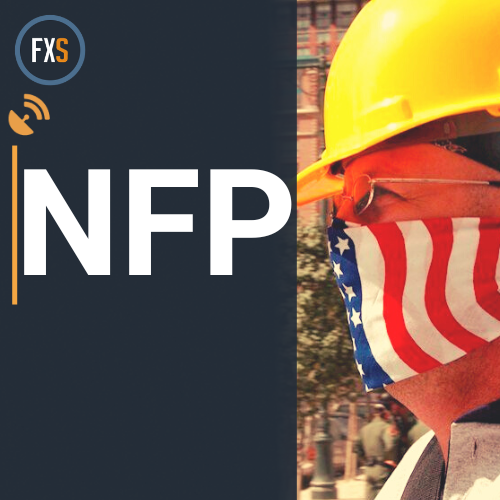- US Nonfarm Payrolls are expected to increase by 170K in August, slowing from the 187K reported in July.
- The headline NFP and Average Hourly Earnings could impact the Fed’s future policy.
- The Unemployment Rate in the United States is seen steady at 3.5% in August.
Traders scale back the odds of a final interest-rate hike by the US Federal Reserve (Fed) this year after US job openings dipped to levels unseen since early 2021. The US JOLTS Job Openings data revived bets of a Fed pause on rates and triggered an extended US Dollar correction from 12-week highs set last Friday.
The highly anticipated Fed Chair Jerome Powell’s speech at the Jackson Hole Symposium on Friday was perceived as hawkish. Powell’s commentary hinted at one more rate hike this year, reinforcing the narrative of ‘higher rates for longer’. The US Dollar Index rallied hard on his hawkish rhetoric and tested the key 104.50 level.
Following Powell’s speech, the odds for a November Fed rate hike spiked up to roughly 57%. This probability has fallen to 40%, in the face of the disappointing US jobs data, according to data from the CME Group’s FedWatch Tool.
What to expect in the next Nonfarm Payrolls report?
Attention turns toward Friday’s critical United States (US) jobs data for August. The key employment statistics will confirm whether labor market conditions are loosening up amid concerns over a likely ‘hard landing’.
The Nonfarm Payrolls data is expected to show that the US economy added 170K jobs in the eighth month of the year, compared with a job gain of 187K jobs reported in July. The Unemployment Rate is likely to hold steady at 3.5% in the reported period.
The focus will also be on Average Hourly Earnings, a measure of wage inflation, which could have a strong influence on the Fed’s interest rate path. The Average Hourly Earnings are seen rising 4.4% on a yearly basis in August, at the same pace seen in July. The monthly Average Hourly Earnings is set to increase 0.3% in August compared with a 0.4% growth in July.
ADP on Wednesday reported that the US private sector added 177,000 jobs in August, well below the revised total of 371,000 added in July. US Q2 GDP growth was revised down to a 2.1% annual rate from 2.4% seen in the preliminary reading.
Analysts at TD Securities noted, “payrolls likely posted another sub-200k gain in August, remaining in the vicinity of the Jun-Jul gains. The August increase would maintain the downtrend in the three-month pace, barring any major revisions. We also look for the UE rate to stay unchanged at 3.5%, following its second consecutive decline in July. We also expect wage growth to print 0.3% m/m (4.3% y/y).”
When will US August Jobs Report data be released and how could it affect EUR/USD?
The Nonfarm Payrolls number, part of the US labor market report, will be published at 12:30 GMT on September 1. EUR/USD has been struggling below the 1.0900 level despite the latest discouraging US data. The labor market data holds the key to determining the next direction of the US Dollar against the Euro.
A stronger-than-expected NFP print and hot wage inflation data would confirm Fed Chair Powell’s hawkish message of another rate hike in the offing. The US Dollar is likely to catch a strong bid on robust employment and pay growth data, driving EUR/USD back toward the two-month low of 1.0766.
On the other hand, the US Dollar could extend its downside if the data suggest loosening labor market conditions, bolstering Fed pause bets for this year. In such a scenario, EUR/USD could rebound further toward 1.1000.
Meanwhile, Dhwani Mehta, Asian Session Lead Analyst at FXStreet, offers a brief technical outlook for the EUR/USD pair and explains: “The main currency pair has failed to find acceptance above the horizontal 100-Daily Moving Average (DMA) at 1.0924 so far this week. The 14-day Relative Strength Index (RSI) is trending below the midline. These technical indicators suggest that EUR/USD remains vulnerable heading into the US NFP data release.”
Dhwani also outlines important technical levels to trade the EUR/USD pair: “Immediate support awaits at the mildly bearish 200 DMA at 1.0816, below which the two-month low of 1.0766 could be threatened. The last line of defense for Euro buyers is envisioned at the 1.0700 round figure. On the flip side, strong resistance is located at the 21 DMA of 1.0896. Euro buyers need to crack the latter on a sustained basis to retest the 100 DMA key barrier, as they keep sight on the August top of 1.1012.”
Economic Indicator
United States Nonfarm Payrolls
The Nonfarm Payrolls released by the US Bureau of Labor Statistics presents the number of new jobs created during the previous month in all non-agricultural businesses. The monthly changes in payrolls can be extremely volatile due to their high relation with economic policy decisions made by the Federal Reserve. The number is also subject to strong reviews in the upcoming months, and those reviews also tend to trigger volatility in the Forex board. Generally speaking, a high reading is seen as positive (or bullish) for the USD, while a low reading is seen as negative (or bearish), although previous months’ reviews and the unemployment rate are as relevant as the headline figure, and therefore market’s reaction depends on how the market assets them all.










